Part One of Four
The Ceremonial Start of the Iditarod has become more and more enjoyable for me over the years. Funny thing, really. You would think that my stress level would rise as the race start nears, but really, it’s the opposite. At this time in the season, there is nothing more I can do to improve my race. This is it. All that I have put into it: the care, training, conditioning of my dogs, myself, my gear, all of it – it’s OVER. No more planning, no more pondering – it’s here. Therefore, it’s time to enjoy the fruits of my labor and the ceremonial start is just that! Saturday went off with out a hitch. Our Anchorage SP Kennel Pit Crew is all veterans. They are folks who enjoy the dogs, the race and the hype. We once again stayed at Clarion Suites downtown and so the starting line is literally a stone’s throw from our hotel rooms. The dogs were grateful to get out on the 11 mile route and run for an hour. Only 12 dogs are allowed on Saturday’s team, in order to keep the procession under complete control. So, we had to look through the roster of 17 dogs and make some difficult choices. The line up, in running order, was: Cha Cha and Skittles, Bullet and Snickers, Dingle and Happy, Pud and Quito, Nacho and Tony, Biscuit and Tatfish.We left Spot, Chica, Rose, and Homebrew in their boxes on the truck. Bridgett was on my second sled. Iditarod officials have gotten more stringent the past few years in approving second sled mushers. These mushers need to be truly qualified dog people. If something were to happen to the primary mushers, they need to be able to confidently control the entire team. In addition, we have important “cargo” on Saturday – in the form of our Iditarider. The Iditarider Program is quite valuable to the Iditarod, so we are told to be cautious on the tricky route through downtown Anchorage. It only makes sense that a second sled should be driven by a confident character; thus Bridgett. She is that and more for us. Bridgett is Allen’s youngest daughter and also my very good friend. She is a significant part of SP Kennel team and she agreed to be my second sled driver, instead of her Dad’s, this year. I was honored. My Iditarider was Ken Privratsky. Ken is the Senior Vice President of Horizon Lines Pacific group. Ken is also a friend. He and his wife, Kathy, have seen our teams come across the finish line in Nome for the last few years – so it was fun to finally have Ken aboard “our ship” at the starting line.
The START
The Sunday start was in Willow. The 16 dog team was Cha Cha and Dingle in lead, Snickers and Skittles, Pud and Bullet, Chica and Meg, Homey and Rose, Quito and Nacho, Tony and Spot, and the wheel dogs were Tatfish and Biscuit. The obvious omission was Happy. Happy had competed in a race only 3 weeks before the Iditarod and her right shoulder muscle seemed to be tight and sore. She was not 100% after the 11 mile Ceremonial Start and since we are allowed to substitute dogs in between Saturday and Sunday, she was excluded from the final squad. Happy would be a heart warming, delightful addition to my team, so the decision was not made with out a lot of thought. Her life as a sled dog has been a Cinderella story. She was a “throw away” puppy from a poor kennel and her rise to become a talented Iditarod sled dog was a surprise to all. Her happiness and her character has made her many fans along the way. Happy would be missed on Iditarod this year, by her fans, by her musher and by her team mates. This year’s team is a realistic cross cut of SP Kennel. We do not have hundreds of sled dogs to choose from. We do not buy many dogs from other mushers. Nor do we have dozens of litters of puppies every year. We carefully select who our breeders are and we neuter or spay many of the remaining dogs. We try to limit our kennel to one litter of “new faces” each year, sometimes two. However, in doing this, we also must retire, sell or give away the same number of adults. We try to keep our kennel population stable so that we can both afford and enjoy all of the commitments that come along with a sled dog musher’s lifestyle. Ultimately, the goal is to raise a happy and healthy Alaskan Husky who will have a chance to compete for many years on an SP Kennel dog team. A quick profile of this year’s team shows the cohesive “family” nature of an SP Kennel dog team from oldest to youngest: Cha Cha is the oldest at 8 years. The 7 year olds are Tony and Bullet – they are first cousins (their dads are brothers). The 6 year olds are Skittles and Snickers (“Candybar” siblings who are one year younger than their full brother, Tony) and Homebrew (who is a half brother to the “Candybars”.) The 5 year olds are Meg (Nutmeg) and Rose (“Spice” siblings who are half siblings to the “Candybars”.) The 4 year olds are Biscuit, Spot and Tatfish (“Southern” siblings who are half siblings to the “Spices”.) The 3 year olds are Dingle and Pud (their mother is Cha Cha and they are half siblings to Bullet and Homebrew) and Chica, Quito and Nacho (“Mexican” siblings who are half siblings to the “Southerns” and first cousins to Dingle and Pud.) It’s complicated to some people, but I know these lineages and family tree like the back of my hand (probably better because I have gloves on half of the time!)The team is a nice combination of wisdom and maturity influenced by youth and energy. The average age of my team was 4.8 years old. As far as race experience, Cha Cha had raced the Iditarod 6 times, whereas Pud and Nacho were Iditarod rookies. The team of 16 dogs had a total of 36 Iditarod experiences, making an average of 2.25 experiences per dog. Here are a few more quick statistics for any of the “dog geeks” reading this. When you look at “older” dogs (6 years and over), they average 3.6 Iditarod experiences, whereas, the “younger” dogs (3 years and under), average .6 experiences. My main leaders (Cha, Bullet, Skittles, Dingle and Rose) averaged 5.8 years and 3.6 experiences per dog.What does all of this mean? Basically, the SP Kennel team was rock solid. If you didn’t have years of experience to back up your performance, then you had youth and energy and a proven lineage and pedigree of past Iditarod racers. It also means that our dogs here at SP Kennel aren’t “one hit wonders”. They are life-long athletes and competitors. These dogs also know each other, are mostly family, and they have worked side by side for years. The team is a cohesive unit. 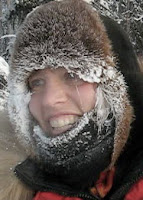 What about the musher? There are 17 athletes per dog team as I am often reminded. The musher is obviously a key part of the equation. Certainly, the team can’t run 1,000 miles with out the dogs, but it won’t make it very far without a musher either.This will be my 10th running of the Iditarod. I have run ever year since 2001. I have finished every year. I have never won Iditarod. But, every year I have won my own race.
What about the musher? There are 17 athletes per dog team as I am often reminded. The musher is obviously a key part of the equation. Certainly, the team can’t run 1,000 miles with out the dogs, but it won’t make it very far without a musher either.This will be my 10th running of the Iditarod. I have run ever year since 2001. I have finished every year. I have never won Iditarod. But, every year I have won my own race.
ON THE TRAIL
We left from the starting chute with out any trouble. The whole crew is so amped up (this includes the Pit Crew and fans!) The first few miles of mushing is down the one sliver of barren snow not occupied by Iditarod spectators. I really enjoy the well wishing and appreciate the folks who are ambitious enough to venture out into the frozen March afternoon. As these crowds lessen and the dogs begin to trot with ease, all my hours of standing on sled runners comes in handy and I calm down and begin to enjoy the ride. I don’t think that I become truly “one” with my team until we leave a little of this hype behind. Several funny things always happen in the first few hours of the race that make me smile and relax a little. This year I was keeping the team at a steady 10 mph pace. This is enough speed for them to use their pent up energy from the last few days, but not too much to cause silly injuries. We passed a dog team moving rather slowly and the musher stopped and yelled to me “Have you got any extra dog booties?” I was really taken back – if they didn’t have enough dog booties at the start of the race, just how ill prepared were they? I kinda shook my head and thought “I wonder how far that dog team will make it?” We meandered down the frozen rivers which make up most of the trail for 35 miles. There were snow machines, airplanes and people on skiis. Everyone was delighted to enjoy just a small part of “The Last Great Race”. We soon came to the first identifiable checkpoint, YENTNA. I took my starting bib off and handed it to the checker. They needed me to sign in, as I would at every checkpoint thereafter and the Veterinarian needed to see my Vet Book. There was a little chaos as my team veered to the right and knocked down the straw bales that had delineated the chutes. My focus had been on the bib and Vet Book instead of the team – early race mistake! I think that Skittles and Snickers were pretty amped to get going and thought perhaps there was a short cut bypass to the right. I sorted the mess out and YENTNA was happy to see the team leave. We left and got back into the flow. All we really needed to do was keep a nice steady pace. I kept one foot on the sled drag in order to slow them down just a little. I talked to Cha Cha and told her to “take it easy”, but she was certainly in race mode. I turned the team off the trail a few hours after YENTNA. This was our first real stop. I had salmon snacks out and given to the dogs before 30 seconds passed. I wanted to make sure that my race efficiency wasn’t holding up the show. I took their booties off and half of them found a spot on the straw I had just laid out. The other half of the team mingled, smelled the ground, licked their feet and generally wondered why we had to stop at all. I wanted to rest them a short while as well as give them some food and water. The team gets so jazzed before the race with over 1,000 dogs barking in their ears that some of them don’t eat or drink as well as I’d like. So, I had a bucket of food and feed them a warm meal. We stayed there a short time and to the delight of the dog team, soon headed back down the trail. We made our way in the darkness now. I had a great rechargeable head light that Macgellan had found earlier in the season. So, with this powerful lamp strapped to my head, I lit up the oncoming wilderness. I like to run with my headlight turned on, but it often makes the whole world seem like a tunnel. However, I have been lost on the Iditarod trail before due to a headlight malfunction, so my tendency is to keep the trail lit up …. so that’s what I did!We mushed through the bends in the river that signify to me that SKWENTNA is nearing. From a distance, I could see what I assumed was a sign of the Iditarod’s financial woes: there were no towering flood lights shining down over the checkpoint this year. For as long as I can remember, the glow of the SKWENTNA checkpoint could be seen from a distance, but tonight I could just pick up the occasional glow of individual headlights. I pulled into the chute where an official checker signed me in. The place was quite busy with 43 teams already there. Only two teams had left. I asked for a Veterinarian to look through my team and sign my Vet Book, but there was no one around. This was very ironic because at the Pre Race Mushers Meeting, Ray Reddington had complained that he had to wait for Vets several times in SKWENTNA. He asked if a Checker could sign a Vet Book. Anyhow, I had publicly poo-pooed the idea and now here I was waiting for a Veterinarian. I did actually chuckle as I waited for the Vet. It all worked out. As I picked up my resupply of dog food, dog booties, fuel and gear, a Veterinarian popped out of the woodworks and was able to OK my team. The team’s Vet Book is a critical item. Not only is it mandatory gear, but it also dictates the medical history of all your dogs for the duration of the race. In order for a musher to continue from one checkpoint to the next, they have to get a Vet to look through their dog team with the Vet Book as their guide. Then if all is OK, the Vet will sign it and the musher will sign it. It is basically an agreement between Doctor and Patient that they both feel the team is happy and healthy enough to continue down the iditarod Trail. So, we were packed, OK’ed and ready to roll through SKWENTNA. We were the 3rd team to leave. This is where the trail gets off of the predictable frozen river and starts to get exciting. There are hills and windy turns that keep a team excited and a musher wide awake (despite the fact that it is now early in the morning.) We still pass a few spectator camp fires that are booming in the wee hours, but they are few and far between at this point. You can tell that you are starting to climb into the Alaska Range Mountains. The snow was bottomless in this area and it seemed like there was more precipitation on the way. The trails were deep troughs with high berms on either side. I passed a few teams here and there, but at times we had to wait for a wider section of trail or the dogs would try to pass and be up to their eye balls in snow. Zoya Denure and I had a horrendous pass in the deep snow. My dogs couldn’t get around her team and then our sleds got interlocked – all the while 32 dogs stood side by side “getting to know one another”. After half off my team tangled their lines into half of her team, I finally was able to pull ahead. We pulled off of the trail onto a side trail for a few hours of rest. Once again I went through the ritual that would become so customary in the next 10 days: snack dogs, take off boots, lay out straw, put on dog jackets, and make dog water for a warm meal. I like to camp the team along the trail. I always pull far enough off the trail that my team isn’t distracted by passing teams. And with the snow levels as they were – a team would have to jump on its rear legs in order to even catch a glimpse of my camp site. So, we stayed for a meal and nap and I even got in my sleeping bag for an hour.Daylight began to show and it was now the second day of Iditarod. In this section of trail I always wonder what the weather is back in Anchorage. When the conditions are clear we will always see a lot of spectators and airplanes overhead. The noise of the landing airplanes is a good indication of how far the next checkpoint lay ahead. This year, the conditions seemed poor for aircraft, but great for dog teams, so I had to guess how far away FINGER LAKE was. We meandered up and over snow moguls and through a pristine winter wonderland until we came to a large lake. This was it! As you approach FINGER LAKE and the checkpoint, the amenities lay several hundred yards across the lake. But the trail does not follow this direct route. It follows the shore line of the lake, rounding the entire lake. The dogs and musher look longingly at the checkpoint as we “Haw” away from it and follow the trail. This year, the shore line wasn’t too bad. The dogs continued to make good time, so the turn wasn’t too melodramatic. We pulled into the checkpoint and the dogs were pretty perky. The checker seemed a little surprised that we were going through. Overall, it was a smooth “in and out”.I wasn’t sure where I was in terms of my competitors. I had started in position number 50, so I was originally at the back of the pack. Then I went through SKWENTNA before most teams had left. Then I figured that at least 30 teams had passed me while I was camped early this morning. I had scanned the dog teams that were camped at FINGER LAKE and by my best guess there were around fifteen. A wild guess was that ten to fifteen teams were now ahead of me. It wasn’t a huge concern, but it’s always nice to see who is where. The next section of trail is rather infamous for treacherous turns and drops. Actually as soon as we leave FINGER LAKE the dips begin. You have to hold on tight to your handlebar and be ready to jump off the runners at any moment. The trick to driving a big team in this area is to let them roll. There are many 90 degree turns around sizable trees and to slow down the sled is to pull your wheel dogs into the inside corner of these turns. So, on most big turns you drive your team into them rather fast and basically whip out the other side. I think the dogs enjoy this, especially Tatfish, who enjoys anything that’s slightly out of control. I had the three siblings near the rear of the team: Tatfish, Biscuit and Spot. They are all energy. I keep them near the rear because I can watch them a little closer. They are not patient, not especially calm, and certainly not mellow. Their goal is to GO. It is a must to have dogs on the team who are like this. But they are like an engine stuck in overdrive while sitting at a stoplight. You can literally hear the rpm’s and think the whole thing might explode if you don’t pull ahead soon. So, keeping an eye on these three is important. The Happy River Steps are an integral part of this “roller coaster” section of trail. The first step is probably the one that catches most people off guard. There is an abrupt left hand turn with a severe drop, Simply out of necessity you heave all of your weight onto your brake, but by this time, your team has plummeted down the first step and there is no ground under you to catch your brake. Nine out of ten times I have to stop at the bottom and untangle a dog or two. This is done very, very quickly out of fear that another team might be right behind me and therefore, soon, on top of me. I was run over once, by Hans Gatt, but that was completely my fault for stopping. The second step is the easiest with a 180 degree set up turn. Your team is heads in the complete opposite direction from the first step. After the turn your leaders go over a small ridge and completely vanish. Your team soon follows them down the second step which hugs the edge of the cliff. The third steps varies from year to year. This year, the set up had a good amount of snow, so the trail breakers were able to keep this last drop controllable instead of the utter plunge that it has been some years. So, we came down onto Happy River in one piece. Like any good race course, as soon as we come down this decent, we immediately climb back up the other side. This is one part of the Iditarod Trail when I am truly happy that I am fit and able to help my team. I climb off my runners and jog uphill along side the sled. This is a long steep climb and my lungs are burning when I reach the top. The next 20 miles is more ups and downs like this one as we mush our way through the Alaska Range. Fitness is important to me. For both my dogs and myself. My team could certainly make it 1,000 miles with out much assistance from me, but I almost feel like I’d be cheating. When we climb a steep incline and the dogs look back at me, I can truly ask them to give it all they have, because I know that I am. Only three team were in RAINY PASS checkpoint when I arrived, which didn’t surprise me. There is a small lake only an hour or so before the checkpoint which has become more and more popular as a stop over spot. As we passed, I saw quite a few teams and chimney smoke from a warm welcoming cabin. So, the leap frogging has begun! RAINY PASS was a pleasant site as well. We were getting snow flurries for most of the day. It didn’t look like the mass spectators were going to be at the checkpoint as in years past. This was good and bad. Good that all the ski planes landing on the lake weren’t making a big ruckus as the dogs tried to sleep. But bad, in that Mickey, my mom, was on a Iditarod Skytrekking adventure and one of her first stops was at RAINY PASS. In my ten years of racing, my mom has seen very little of the trail, so this was her first big chance. I was excited to share it with her. We checked in, parked the team and I littered the spot with hay for them to sleep in. The Lodge at Rainy Pass has horses so they ask that we use hay instead of straw, so that they have some guaranteed winter feed. It works for everyone. The dogs rested well as teams began to file in behind us and either go on through or stop and set up camp for a while. I tended to everyone for a few hours. I was wrapping quite a few wrists – more precautionary then anything. And for some reason, some of the dogs seemed to have some shoulder soreness. I rubbed them down with Algaval, a muscle liniment. I also have dog coats that go over their front legs. These keep their shoulders warm because they have pockets for chemical heat warmers. So, both Biscuit and Spot slept in these coats. I went into the wall tent cabin that was several hundred yards from the team. I picked a top bunk to lay on for a short while. I did relax, but it was so hot up there that I took off most of my long johns and still sweated. Paul Gebhardt was staying for a while, as was Cim Smyth. A few other mushers were here but they didn’t rest very long inside the cabin. It was nice to just get off of my feet for a short time. Many mushers have those “sit down” sleds these days and I certainly see some benefits. I also see a huge drawback, that if you are not used to using one, you can easily get your leg caught under the seat and …. snap. That happened in December to one of our neighbors. We left RAINY PASS while it was still daylight so I could see the outline of the mountains in the snow filled sky. The peaks weren’t visible, but I could still grasp the utter vastness of the Alaska Range all around me. Once again I felt like an insignificant speck on an immense world. We traveled with strength up into the mountain pass. The team was incredibly strong. I still had Cha Cha in lead and I had decided that I was going to leave her up there. There was no dog better than she was. I had thought of giving her a “break” from time to time, but that’s not what she wants. She wants to lead. So, I decided from then on… it was Cha Cha until the finish.
The snow and the wind made progress through the mountains challenging. The team has great drive and will keep their heads down, but you can’t overlook the wind. Most of the dogs had on light weight wind breaker jackets. These jackets weigh very little and I don’t think they bother the dogs at all, so my tendency is to dress the entire outfit. As the trail crested the pass, the wind was at its fiercest. The obvious wind direction was from the north, as we headed directly into it. I asked them to scamper over the final draw and then we started down the other side. The wind lessened a bit, but more than that, we were now running down hill. It is another roller coaster ride for the next few hours into ROHN. As the trail comes down the mountain side, it follows a creek bed – winding and turning. There are occasional spots of open water that come upon us so quickly that the dogs mindlessly leap 3 feet into the air and the downhill progression of the team carries each dog safely over the hazard. An Iditarod sled really gets a work out for the next 20 miles. There are light weight sleds that steer and there are old school sleds that are rigid freight trains. My sled is a mixture of the two. It doesn’t necessarily turn on a dime, but if I hit a tree, stump or huge iceberg, it won’t fall apart under my feet. So, in order to steer I needed to maneuver my weight from side to side rather quickly to avoid ice holes and boulders. I was pretty successful, thank goodness. This section was the demise to several teams this year. One team had to be rescued by the Iditarod Trail Sweep, as the musher had driven her sled into a huge hole in the ice. The dogs couldn’t pull the weighted load out, so they sat there and waited for help. The next checkpoint along the route is ROHN. I usually pass through and camp on the other side near a nice creek. As I neared the checkpoint, I start to look at my options. It was pretty cold – 20 below – and the wind was really roaring now. The wind chill factor made it seem much colder. I knew that in order for the dogs to get a comfortable rest, they needed to get a little relief from the wind. Since ROHN is the last forested area for the next 75 miles, it became clear: we were stopping in ROHN. The checkpoint seemed very busy as I pulled in just before midnight. The cabin is situated in a very wooded spot with huge white spruce trees. The dog teams are camped in and around the trees. It is hard to get a realistic count of how many teams were there ahead of me. But, they parked me just to the side of the cabin, right next to Lance Mackey, so I knew he was there. I went about my business taking care of the team. I am ultra conservative when it comes to evaluating my dogs. We are less than a quarter of the way into the race. In my opinion, every dog should be running at 100% of their speed, ability and attitude. Later on in the race, I understand if a dog is a little tired or a bit slower – I get that way at times as well. But, right now – no. 100% is what I expect. Snickers was not 100%. He did not pull as hard as he is known to pull over the mountains. He exhibited some wrist soreness, but overall, I couldn’t pinpoint his problem. This is when my logic of being in this race for the long haul becomes obvious. Something is wrong, I don’t know exactly what. I don’t have the luxury of resting him 12 hours to see how he looks. I would no longer be competitive if I did such a thing. I know that keeping a dog in the team who isn’t up to par, is not only cheating him, but it is also cheating the rest of the team. I would lose focus on the dog team as a whole and start to watch Snickers every move. I would stop the team constantly to monitor him and generally act like a worried parent. This isn’t good. I know this through experience. So, I call the Vet Crew over and as they look through my team, I take off Snicker’s harness and lead him to the dropped dog area. He does look forlorn and sad to leave his pack. But, I know, this is in the best interest of all. He will be flying back to Anchorage in the next day or two, then on to the kennel in Two Rivers before the rest of us reach Nome. All I can say is “I’m sorry, Snick.” We left ROHN feeling pretty perky. The dog team had rested in their straw beds – comforted from the the cold wind – for over 5 hours. They were now moving down the trail with full bellies. Cha Cha was in front of the team. I was calling her my “Brett Favre”: she was a bit older than many of her team mates but, much of the time, she far surpassed their skill level and determination. A few miles past ROHN, the trail began traveling through a freshly burned section of forest – the smell was strong and Cha Cha lifted her head periodically to sniff. I think the dark burned trees and dead slash that lay everywhere made the team nervous. A nervous team is a fast team, so we motored through the miles. We came upon an abrupt uphill grind that signals to veteran mushers that the Post River Glacier is getting close. The dogs and I both ran up the long, steep climb. Cha Cha and I knew it was coming. The trail up and over the Glacier has changed very little over the years. Considering this was Cha Cha’s seventh trip on the Iditarod, she knew where to go. Or so she thought. But, the trail breakers tried to make the Glacier “easier” this year, so they changed the route a little. Traditionally, the trail encounters the Glacier about halfway up the ice sheet on its right edge. A dog team gets on the ice and naturally climbs the right edge of the ice, barely skirting a huge boulder. On the uphill side of the boulder a dog can see bare ground and so continues up the ice with the end in sight. This year, the trail still encounters the Glacier at the same spot on the right edge. Now the trail crosses the ice sheet – perpendicular to the flow. The crossing is about 50 yards wide. Then the trail goes into the trees on the left edge of the ice and it makes a sharp 90 degree turn. Here there is bare ground and a dog can get traction. This new route then parallels the Glacier to the top. The traditional route makes sense to a dog. The team approaches the Glacier on the right perimeter and they see the ice laid out ahead of them. They are a little intimidated, but they continue on, hugging the right bank, heading towards the boulder. The boulder looks like a safe haven for a dog (because it’s not ice), but really is more of a blockade that keeps the team on the Glacier. Once the team passes the boulder, they see the top with bare ground showing and the obstacle is soon behind them. The biggest problem with this traditional route is the sled or the dogs riding up on the side of the boulder. The new route is quite challenging and doesn’t consider a dog’s point of view. First of all, when the dogs first see the Glacier they are immediately asked to trot across. Ice often makes dogs nervous – they have little traction, no control and the weight of the sled often directs where the team winds up. What happens when you try to cross an icy downhill slope? You slide downhill. A dog might only slide a little because they can use their toe nails to hang on and lean uphill. But, a heavily weighted sled with no steering capability, slippery plastic runners and a musher on the back will immediately go downhill… fast! This, in turn, pulls the dogs downhill as well. There is NOTHING a musher can do but try to get to the other side as quickly as possible. The team overcompensates and tries to pull hard uphill. If they don’t the whole squad will plummet uncontrollably down several hundred yards to the bottom. So, all this time you are telling your team “Haw” (go left across the Glacier). So, we made it across the Glacier and into some willow bushes on the edge of the ice. Neither the dogs, nor I, had traction. We were uphill from where the trail enters the trees, so I continued to tell them “Haw”. A few dogs got their tug lines tangled in the willow bushes, so we stopped abruptly on the ice. I was able to crawl on the ice half way up my team and cut the limbs loose. Cha Cha was constantly looking for somewhere to go, standing still or sliding down the slope didn’t make sense to her. So, as soon as I cut the limbs the team started to move. I kept my footing on the ice and waited for the sled to reach me. The leaders reached the far side of the Glacier and immediately they saw the trail. I was still standing on the ice, watching my sled approach and commanding them to stay “Haw”. I didn’t see that Cha Cha was on the trail, so she immediately turned left (as I had been asking them) and started following the trail DOWNHILL! The sled hadn’t reached me yet, so I had no way to physically stop the team. I must have sounded desperate when I asked the team to “Whoa”, because the entire team stopped and looked at me. I gave Cha Cha a “Gee” and she immediately understood. She turned around, trotted past the 4 other dogs that stood on the trail in her way and started uphill instead of down. Everyone cooperated! I watched in awe, as the team lined out. The sled soon reached me and I climbed on board. We trotted up the remaining left side of the Glacier and over the top. Whew! All of this happened in very few minutes. But, here’s another part to the story. Another dog team, that of Ray Reddington, was right behind me during this ordeal. I heard him about 1/4 mile behind me in the beginning. But when my team got snagged in the willow bushes he was still moving. He had no way to stop his dogs on the ice sheet, so they followed my misdirected squad into the bushes. When I untangled my team and they turned left, Ray’s team saw this move and turned left as well. The only problem was his leaders were still on the ice. They never saw the trail. So, their turn positioned them in a heading straight down the Glacier. There was no way out. Ray and his team went plummeting all the way to the bottom. I heard him shouting all the whole way. I felt awful, to say the least.
Recent Posts
8 Responses
Comments are closed.

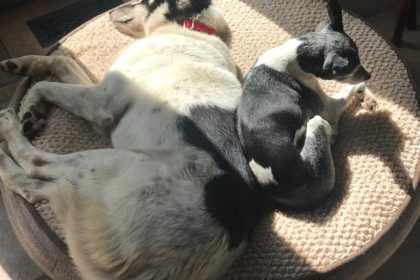



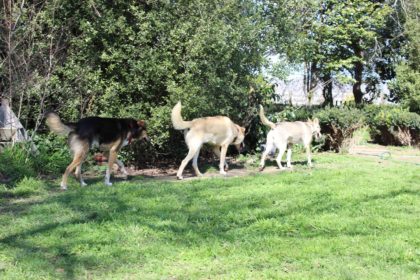
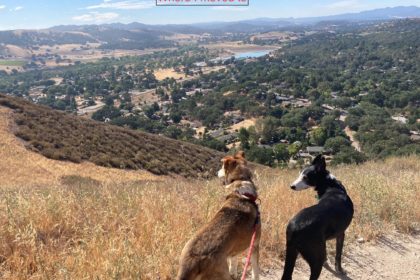
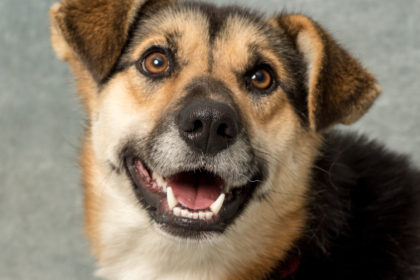
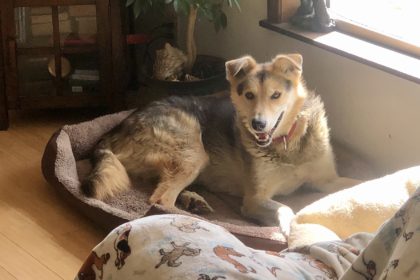
I've been waiting anxiously for your trail notes and was not disappointed! What an amazing story! The glacier crossing was a heart-stopper for me….I can only imagine what it was like for you!
I am constantly amazed and impressed with the care and concern you have for each and every one of your team members! It was so interesting hearing about the relationship of the team members, the ages, etc. It appears nothing is left to chance!
I feel so fortunate to have had the opportunity to participate in the ANWR dog sled adventure! Though it doesn't compare to the trials and tribulations you face on the Iditarod trail, I feel I can relate to the Iditarod adventure in some small way! (Oh how I want to go back!)
I look forward to reading the next three installments when you get to them!
Have a great summer!
Linda Finkel
What a grand story Aliy. You are something else! Loved reading this as I was watching the Happy River Steps video you took in my head. Looking forward to your next installment.
Susan
I too have been waiting for this Aliy. A great way to get a race fix in the middle of summer!!
Libby the Lab
Hey Love your stories,also the videos are great.Some day I will make a trip up there.Just love the dogs.Thanks for sharing so much about your kennels and adventures.
PR
Wow! I've been waiting for this – I'm still in awe of the Happy River Steps video (the one that took out the camera mount, I believe).
Thanks so much and I'm looking forward to reading what happened to Cha Cha near the end (my theory is that she wanted to have her son, Dingle, get the experience in lead crossing the finish line). All the best of luck to SP and to you, Aliy!
We are enjoying reading this. It must have taken a long time for Ms Zirkle to write. Thank you for spending your summer writing this. Hello to Mr Moore and Mr Macgellan too. Please give Chica and Quito a hug from us. Our local skifield has just opened. It is strange to think you are having summer now.
From Chloe and Indigo
Chloe and Indigo. I have given huge hugs to Chica and to Quito. The whole yard got jealous and then I had to spend another 20 minutes giving out hugs! I have finished Part 2 of 4, so I hope you guys get time to read it.
The best from all of us in Alaska!
The 2010 race was the first where I was able to view your videos on the trail. I've been obsessed with TLGR since the second running. Dying with the heat & humidity in Boston, I decided to get a dose of pre-2011 race fever. So glad I did. Watching your videos after the race was wonderful. Now, reading your trail notes has put me in "go" mode. I love to read, but am a slow reader. Your notes read like one of my favorite books which I read in a day and a half because I couldn't put it down. That was The Perfect Storm. Just finished part 1, and am now heading for part 2. Thank you so much for posting/sharing such a personal experience. Hope to see you in person for the 2012 race, but if I don't make it, KNOW there is a die-hard fan of yours AND The Race back east in Dorchester, MA rooting for a smooth, clean and SAFE race for you and your wonderful team. Many, many thanks, and God Bless!